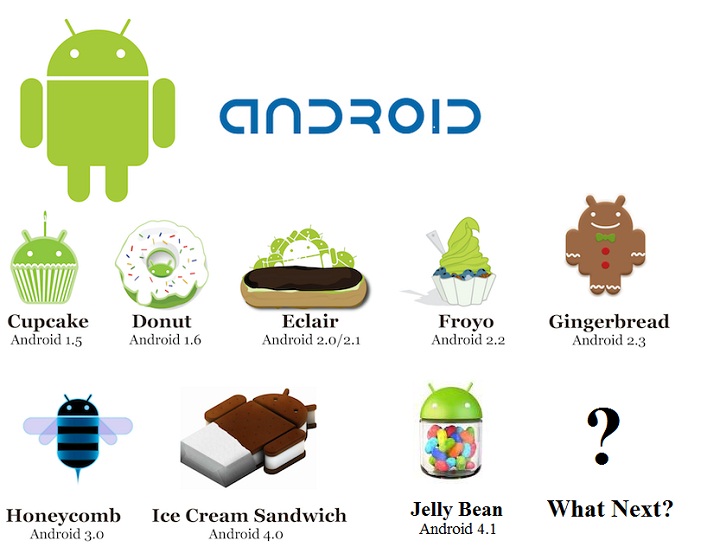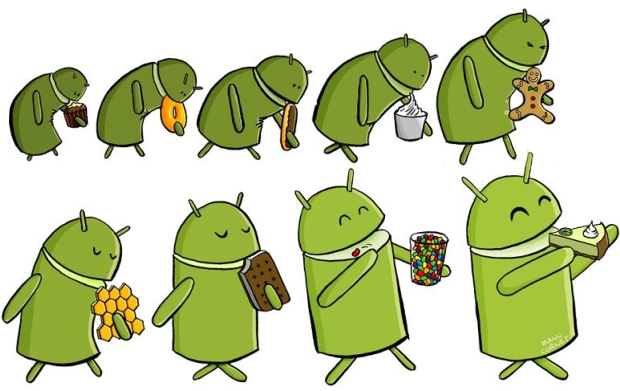Owning 75% of the market in 2012, Android has indeed grown to be the most popular operating system. Though iOS continue to be a very strong competition, more and more Smartphones are strengthening Android’s position. But how did it begin and eventually prospered? Let’s take a look Android’s story.
Where It All Started
Android Inc. was built in 2004 by Andy Rubin, Rich Miner, Chris White, and Nick Sears. Little do most people know that their real intention was to create an operating system for digital cameras and not for Smartphones. When they were half way through the process, these developers realized that operating systems for cameras is not as demanded. Now to make the most of what they have already begun, they pursued the project but this time, they created an operating system for Smartphones.
Early Struggles In The Market
During its development phase in 2004, Android’s target competitors were Windows Mobile by Microsoft and Symbian by Accenture. Aside from being already established that time, these companies also had sufficient financing. Android. Inc’s pockets were not yet as deep so to fuel the vision, Google acquired the company in 2005. As a subsidiary, Google financed Android’s development. Furthermore, Google became the passport to enter the market. And luckily enough, the acquisition by Google gave Android a good leverage to start with.
From 1.0 to Jelly Bean
The first Android operating system was integrated into HTC Dream in 2008. Android 1.0 supported camera, WiFi, Bluetooth, Google Maps, Gmail, YouTube and other now default features. As with every project in its early stage, a lot of adjustments had to be made. And true enough, these changes were seen in the next big release of Android, Android 1.5 or Cupcake. The most remarkable improvement to Cupcake was it supports widgets and enables auto screen rotation. It also allowed users to capture videos in different formats. In 2009, the Android 1.6 or Donut was released. Text to speech engines, WVGA screen resolution support (equivalent to 800 x 480), and the Quick Search Box was its major improvements.
The Android 2.0 or Eclair started a brand new era for the Smartphone. It also marked the beginning of Android’s popularity and competitiveness. Eclair enabled usage of multiple accounts and users were allowed to synchronize contacts with its e-mail features. In 2010, Android 2.2 or Froyo was released. This version of Android had lots of performance improvements. Better speed, V8 Javascript engine, push notification support, Adobe Flash support, and even screens up to 320 ppi were allowed in Froyo—that was a big deal way back in 2010, of course. Android 2.3 or Gingerbread was released with a revamped user interface (UI) and video support for Google Talk were among its many improvements.
Android 3.0 or Honeycomb was the OS for tablets, and was released just in time when tablets were selling like hotcakes. With a different UI, this version was optimized for tablets since they do more than a Smartphone, but have less processing power compared to laptops.
Android 4.0 (Ice Cream Sandwich) was the next step for Smartphones. This allowed users to use software buttons on the touchscreen. ICS introduced WiFi Direct and 1080p video recording. Android 4.1 or Jelly Bean was meant to improve the UI and performance with the help of touch anticipation, triple buffering in graphics pipeline, Google Now, and enhanced sync timing.
The Next Gen
Now, as Android enters a new era for Android 5.0 or Key Lime Pie, rumors suggest that the Android 5.0 will enhance its profile performances, include social media integration, built-in video chat, enhanced multi-device support and other new things.
Indeed, Android has been through a lot. However, its current streak will not end anytime soon as it continues to hold its position on top of the Smartphone OS throne.
The Android’s Story Continues…


